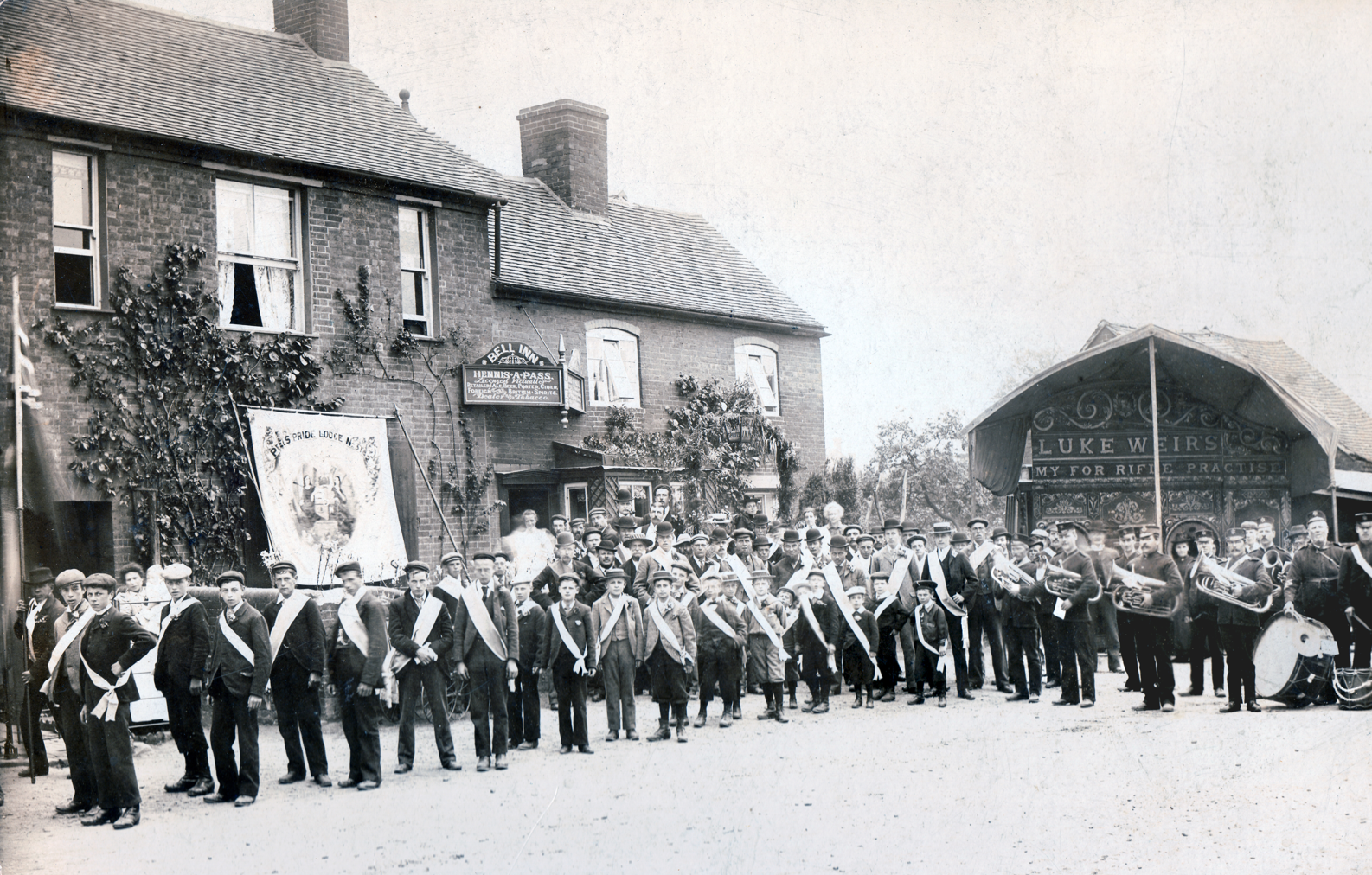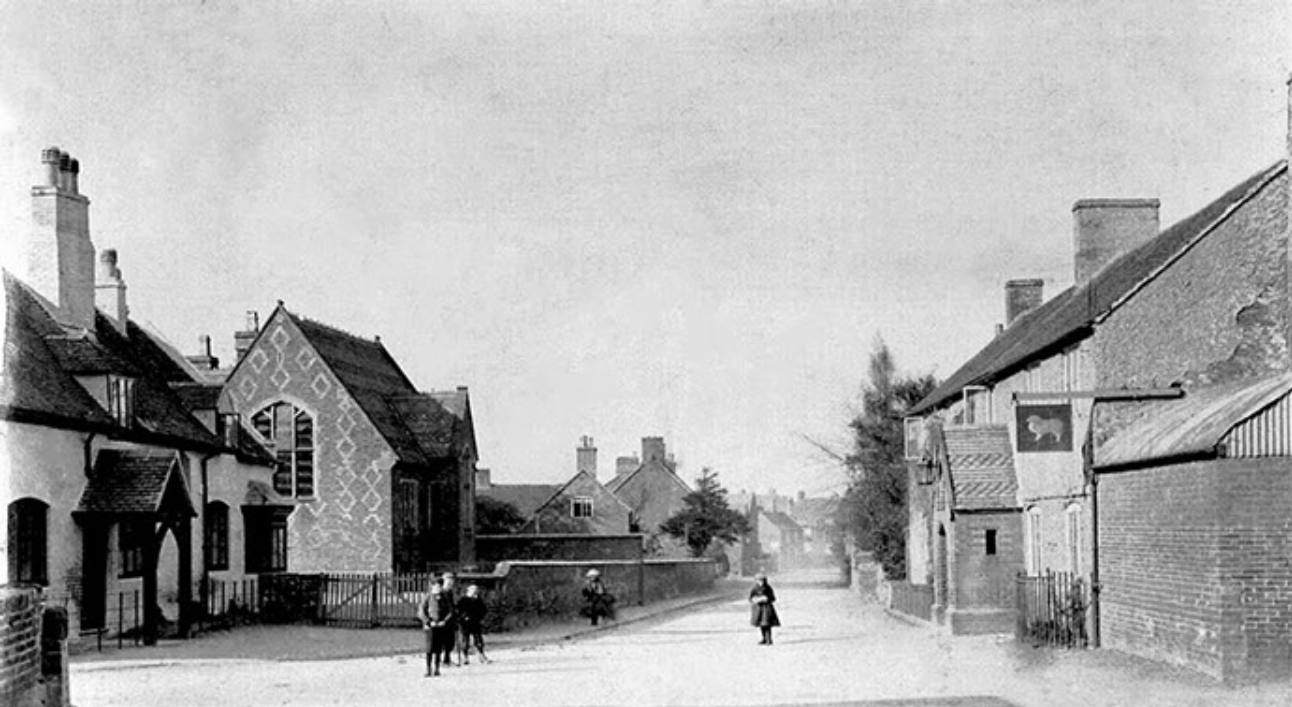Local History
It is probable that the river valleys of the Tame and the Trent were being farmed extensively, at least in the early Roman period. We believe that Whittington was originally the site of an Iron Age/Romano-British farmstead. A small hoard site was discovered near Church Farm within the present day village, which included Saxon and Roman brooches, Roman coins and pottery of a similar date. The coins from the hoard date to the reign of Septimus Severus (193-211AD). There have been several other finds from this period in the surrounding area.
The place name of Whittington is Anglo-Saxon (500 - 1066 AD) in origin and derives from the Old English for estate or farm associated with a man called Hwta or Hwittingas. Fisherwick is an Old English name meaning the dwelling (wic) of the fisherman. Archaeological excavations on the gravel terrace by the River Tame at Fisherwick in the 1970s revealed the existence of human settlement stretching back to the Iron Age (4th century B.C.) with evidence of large-scale salt production from saline springs, presumably for the salting of fish.
Whittington was first recorded in documents of the late 12th century which points to an increased clearance of woodland for farmland following the Norman Conquest in 1066. There has been a church on the present site in Whittington since the 12th century, when worship was taken by the monks who walked over from the Friary at Lichfield. The church was extensively rebuilt in 1760, but parts of the tower date back to the 14th century.
During the medieval period Whittington was surrounded by large communal open fields of pasture, arable and meadowland which were divided into strips and the residents of the village would have held a number of these scattered across the landscape. The village was gradually enclosed into smaller privately-owned fields in a process that was complete by 1800.
From the time of the Saxons until the reign of Henry VIII, the Bishop of Lichfield was the lord of the manor. In 1546, the bishop was forced to surrender it to Sir William Paget, (later Lord Paget), one of the principal Secretaries of State to Henry VIII. He was very much an absentee lord locally, dividing his time between Paget Place, his impressive London townhouse on the Strand and Beaudesert Park, his stately home near Cannock Chase. His descendants lived off the rental income their many tenants generated for centuries to come.
Whittington Hall was built in the medieval period and remodelled in brick and stone in Tudor times by the Everard family. Over the centuries the house passed through the hands of several families and the building which stands today was substantially refurbished by Samuel Lipscombe Seckham in 1891. A second grand house was built next-door by Zachary Babington in 1673, which was later demolished as his descendants had moved into nearby Packington Hall. The Whittington Old Hall Estate covered hundreds of acres, with several farms from Whittington to Fisherwick and Whittington Hurst. The Freeford Estate, held by the Dyott family, included large parts of Whittington and surrounding farms from the Victorian era. These estates, as well as Fisherwick Hall, which was demolished in 1808, were a major source of employment for generations of Whittonians.
In 1741 Sarah Neal left her house and croft in Whittington to start a school for poor children of the village. Funds were augmented when the Reverend Richard Levett died in 1802 leaving a legacy and in 1864 a handsome gothic building for a girls’ and infants’ school was built by Lieut.-Col. Dyott. Village children continued to be educated here until 1968 when a new school was built in Common Lane.
Whittington Heath, to the southeast of the village was formerly used as an open sheep walk. From 1702 it hosted the Lichfield Races, which became a hugely popular event in the horse racing calendar throughout the 18th and 19th centuries. Construction of the Barracks for the Depots of the two Staffordshire Regiments began on the heath 1877. The war department purchased the land from the Marquis of Anglesey in 1881 and the racecourse was closed in 1895. A golf course was created on the heath in 1886 which began as a military golf course, but soon evolved into a popular civilian club. During the Second World War, Whittington Barracks was handed over to the US Army to serve as their 10th Replacement Depot.
For most of its history the majority of villagers were engaged in agriculture. Whittington remained a largely self-sufficient small rural community up until the Second World War, although modernisation gathered pace in the 1920s with the arrival of mains water, sewerage, household waste collections, gas and electric lighting all taking place in this decade.
The large Rock Farm Road/Spring Lane housing development in the early 1960s saw a large influx of new people into the village, which initially met with some hostility from old Whittonians. This along with the adoption of mechanised farming practices and motorized transport from the 1950s onwards saw Whittington evolve into a commuter village, with most villagers working in nearby towns and cities. Whittington Old Hall was sold in 1959 and separated into three dwellings with houses built on its landscaped gardens becoming Cloister Walk. Pass Avenue was built in the late 1960s, with the Birds Estate, Neal Croft and Bramley Way following in the 1970s.
In 1979 Reverend Paul Brothwell became concerned about the quality of care available in local hospitals to patients with terminal illnesses. St Giles Hospice was established in 1983 on the site of the old Vicarage, it has since grown to become a major institution for palliative care in the Midlands.
Whittington is today one of the most sought after places to live in Staffordshire, with a wide variety of community groups and activities, several shops, two village pubs and a popular Local Food & Craft Market. As well as the the annual Countryside Fair with proceeds supporting village community groups and projects.
Researched by Robert Pass. For more information on the history of Whittington please visit the Whittington History Society Website: https://www.whittingtonhistorysociety.uk/about.html


